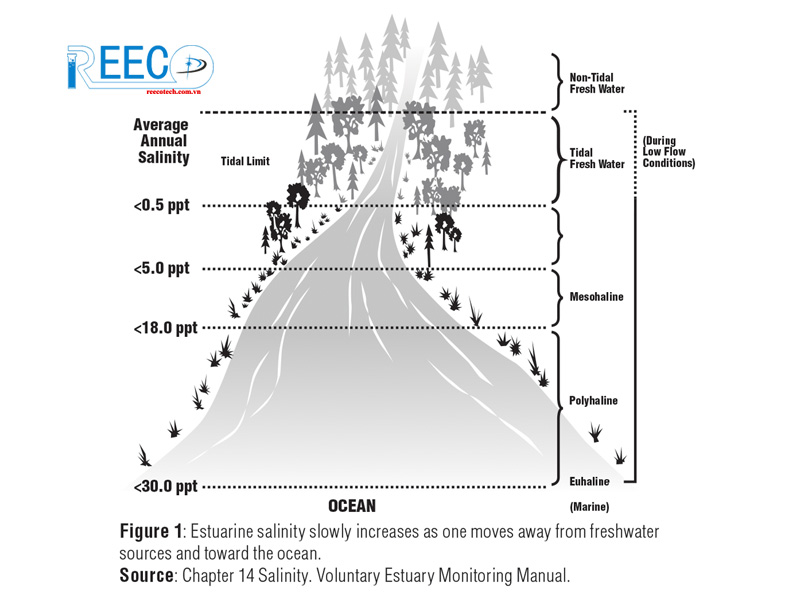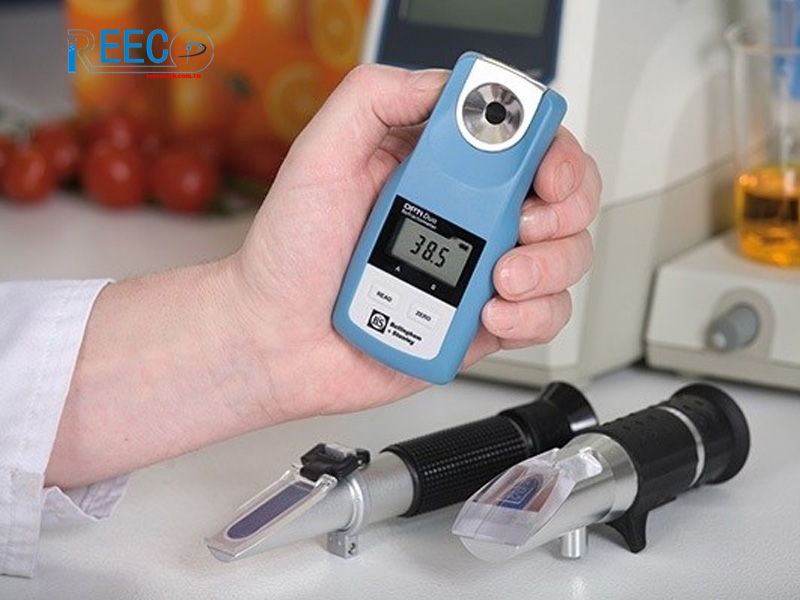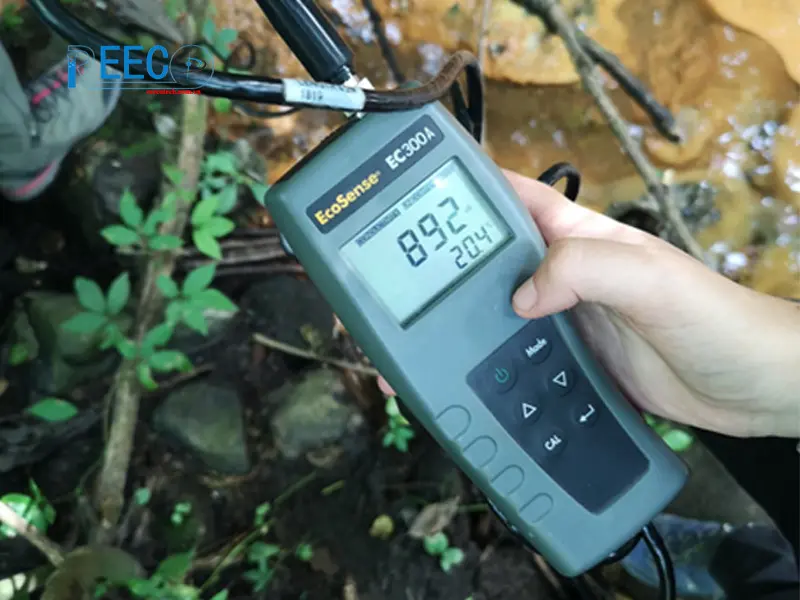The growth of crops, aquatic animals, and microorganisms living in water directly depends on the salinity of the water. Therefore, we need to use salinity meters regularly to check the water quality. In this article, Reecotech will provide you with the common methods of measuring water salinity currently available.

What is Salinity?
Why is it important to measure water salinity?
- Water salinity plays a crucial role in the growth and development of aquatic organisms, aquaculture species, and crops that depend on water salinity.
- Each type of aquatic organism or cultivated species has different adaptation abilities to different water salinity environments.
- Measuring and controlling this index is essential to ensure environmental standards for organisms and their growth and development.
- Water salinity also affects the concentration of dissolved oxygen in water. The higher the salinity, the lower the oxygen solubility, and vice versa. This affects the respiration, health, and survival of aquatic ecosystems.
- Salinity is also one of the critical factors in identifying and assessing climate change.
- Determining water salinity is a very important measurement, especially for seawater or estuaries where freshwater and saltwater meet.
Current Salinity Standards in Water
- Freshwater: 0.01 – 0.5 ppt (rivers, lakes, reservoirs)
- Slightly Brackish Water: 0.01 – 0.2 ppt
- Slightly Saline Freshwater: 0.2 – 0.5 ppt
- Brackish Water: 0.5 – 30 ppt (lakes, inland seas, estuaries)
- Slightly Brackish Water: 0.5 – 4 ppt
- Moderately Brackish Water: 4 – 18 ppt
- Saline Brackish Water: 18 – 30 ppt
- Saltwater: above 30 ppt
- Seawater: 30 – 40 ppt (oceans, seas, inland seas, bays, estuaries)
- Hypersaline Water: 40 – 300 ppt (some lakes, bays, estuaries)
4 Popular Methods for Measuring Salinity in Water
Measuring Salinity with a Hydrometer
Glass Hydrometer for Salinity Measurement
Handheld Plastic Hydrometer
=> Reference: Monitoring water quality and oceanography in aquaculture
Refractometry for Salinity Measurement
- Prism: The prism is the most important part of the refractometer, and it functions to split light into two beams.
- Scale: The scale is divided in parts per thousand (ppt) units, with values ranging from 0 ppt to 35 ppt.
- Eyepiece: The eyepiece is used to observe the salinity scale divisions.
- Supports a wide measurement range
- Does not require energy like pi or electricity but uses direct sunlight
- High accuracy, durability, and long service life
- Supports automatic temperature compensation and manual or automatic calibration
- Simple and easy to use
Using a Salinity Pen
- Compact size
- High salinity range
- Direct display of results on LCD screen
- Salinity measurement range up to 70,000ppt
- Displays measurement units in ppt, PSU or specific gravity along with temperature
- Automatic temperature compensation (ATC)
- Manual or automatic calibration capability
- Salinity testing of aquaculture ponds
- Salinity testing of seafood farms
- High accuracy salinity measurement
- Fast measurement time
- Supports multiple measurement units
- The device needs to be calibrated regularly
- The price is relatively high compared to the above devices.
Using a Digital Salinometer
- EC300A handheld salinometer
- High precision
- Measure time quickly
- Supports many salinity measurement units
Salinity Sensor Probe – Salinity Meter
Salinity measurement in laboratories is often performed using a sensor probe in conjunction with various handheld salinity meters.
Reecotech offers a variety of salinity meters, including:
- YSI Pro1030 Salinity, Conductivity, pH and ORP Handheld Meter
- YSI Pro2030 Salinity, Dissolved Oxygen, Conductivity and Temperature Handheld Meter
- Online Salinity Meter
=> See more: Equipment to measure most water quality
Conclusion
The salinity of water has a direct impact on the development of crops, aquatic products, and microorganisms. Therefore, choosing the right salinity meter and regularly checking the salinity is very important. If you are in need of a salinity meter, please contact Reecotech immediately for advice and detailed quotation according to the information below.
REECO Science and Technology Company Limited
- Address: Room 202B, Building A, Software Park, Vo Truong Toan Street, National University of Ho Chi Minh City, Ward 6, Linh Trung Ward, Thu Duc City, Ho Chi Minh City, Vietnam
- Email: info@reecotech.com.vn
- Hotline: 0938 696 131 (Sales Department) / 0901 880 386 (Technical Service Department)
- Website: reecotech.com.vn
- Fanpage: Reeco Tech Co.,Ltd








